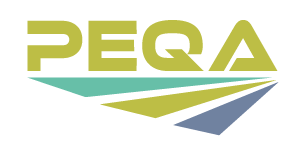Takeaways for VR Counselors & Administrators
Background
In 2015 Missouri VR (MVR) implemented a new summer work-based learning experience program for students with disabilities who were entering their final year of high school. This summer work experience has become an integral part of MVR’s pre-employment transition service delivery system.
While there has been excellent feedback and participation, little was known about how this newer service was influencing employment outcomes.
Purpose of the Study
The main objective of this study was to better understand how this new service could be impacting outcomes for transition-aged youth. The research question asked was: Are summer work experience participants more likely to exit MVR with employment than those who do not participate?
Methods
Using MVRs administrative data set, pulled from MVR’s case management system, the researcher developed two linear probability models. One had controls and one did not. The data set was used to compare employment outcomes between the summer program participant group and an artificially created control group.
The research also developed a propensity score model and used it to compare the participant and control groups across the distribution.
Results
The results of the linear probability models showed that the summer work experience participant group achieved successful employment outcomes (50%) at a significantly lower rate – both statistically and practically - when compared to the treatment group (58%). Similar results persisted in the model with one independent variable as well as when multiple controls were included.
Additionally, the propensity scores at each quintile were analyzed to assess the differences between groups across the distribution. The results at each of the distribution points were similar to what the linear probability models revealed.
Implication for Practice or Future Research
While the results were a bit surprising, several study design flaws were identified that may have played a role in the outcomes.
First, this study was impacted by considerable selection bias and it omitted variable bias concerns. Selection bias is a common concern in studies that do not employ a random assignment strategy. Quasi-experimental analyses, such as this one, can often alleviate these concerns.
Selection bias concerns were intensified by limitations of the administrative data set, which did not include information regarding grade level. This caused concerns that the artificially created control group was not truly comparable to the treatment group.
Additionally, control variables were limited to those available in the data set which was derived from the case management system. Information within the system is input by counselors, and research is not its primary purpose.
Finally, it was difficult to prove causation between the program and employment outcomes since there is a nine-month lag between the summer program’s end and the earliest opportunity for the type of employment that constitutes a successful Missouri Vocational Rehabilitation program exit.
Resources
- Capstone Project Summary (PDF)
- Capstone Project Poster: WORD | Powerpoint
Capstone projects
More Capstone Projects: Capstone Project Hub.

